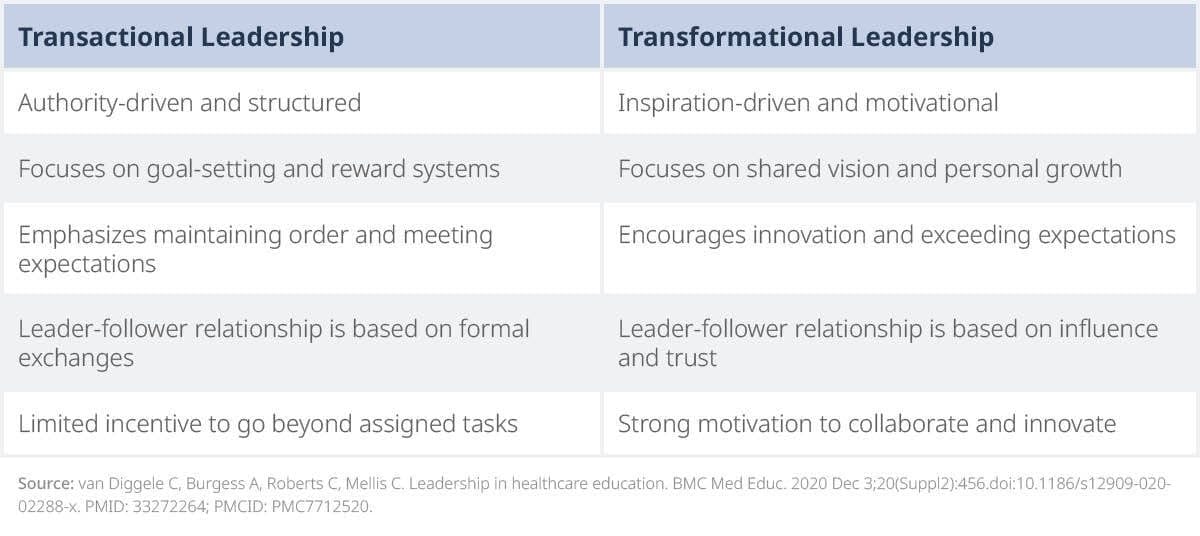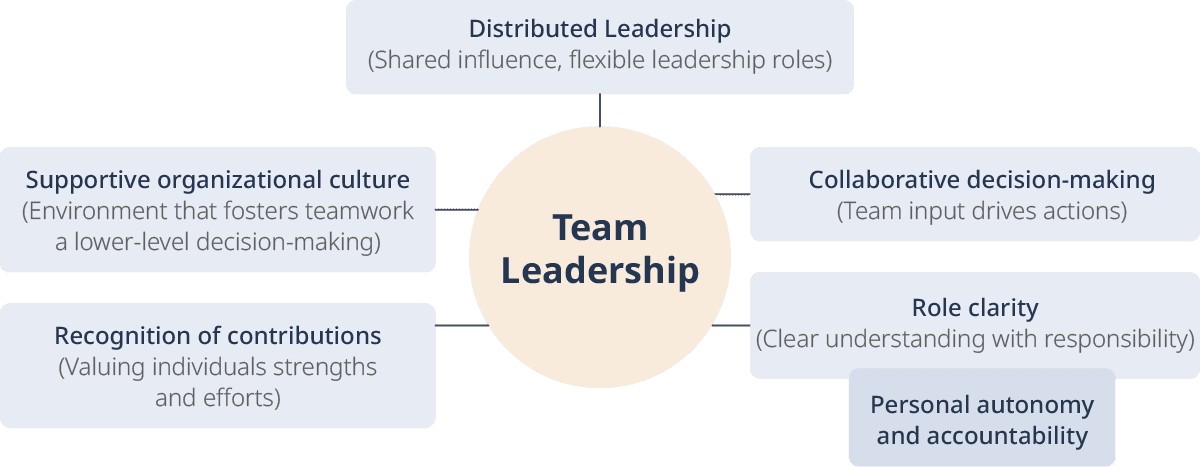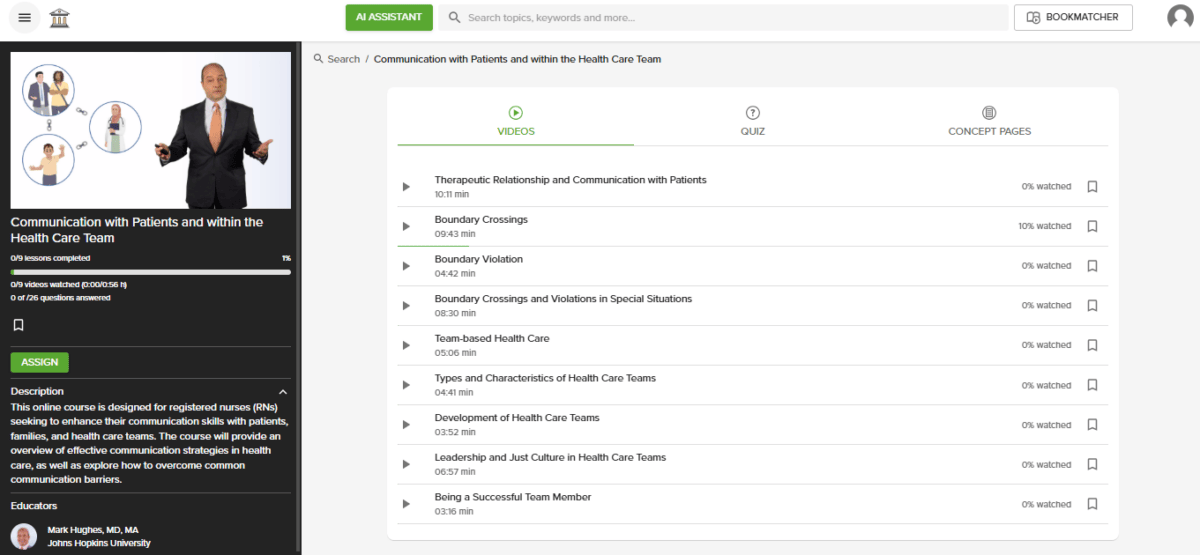This article is an excerpt of Lecturio’s Learning Science Leader newsletter. To receive these updates directly to your inbox, sign up now.
Building Stronger Institutions Through Effective Leadership
Have you considered how leadership style at your institution shapes education and organizational dynamics?
Effective leadership is the ability to guide, inspire, and influence others toward achieving common goals by fostering trust, encouraging collaboration, making informed decisions, and adapting to challenges with integrity and vision (1). In fact, effective leadership is a complex and highly valued component of healthcare education, increasingly recognised as essential to the delivery of high standards of education, research and clinical practice. To meet the needs of healthcare in the twenty-first century, competent leaders will continue to be increasingly important across all health professions, including allied health, nursing, pharmacy, dentistry, and medicine (2).
What makes effective leadership essential in healthcare education institutions?
Helps set a clear vision and goals:
Strong leadership ensures alignment across faculty, clinical staff, and academic departments—vital for delivering consistent, high-quality education and patient-centered training
Promotes a positive culture:
Instructors and students thrive in an environment built on respect, empathy, and a commitment to lifelong learning—especially critical in preparing future healthcare professionals.
Enhances communication and collaboration:
Leadership that fosters interprofessional collaboration mirrors real-world clinical teamwork and enhances student preparedness for multidisciplinary care.
Drives institutional growth and innovation:
Forward-thinking leaders support the integration of technology, evidence-based teaching methods, and evolving curricula to meet modern healthcare challenges.
Builds trust and accountability:
Transparent leadership helps establish clear expectations and mutual respect among educators and learners, reinforcing professionalism and ethical standards in healthcare.
Types of Leadership: Which Should You Aim For?
Leadership can generally be categorized into two distinct styles: Transactional leadership and Transformational leadership.
Transactional leadership is based on an authoritative, structured relationship between leader and follower. It operates through formal exchanges — leaders set specific goals, and followers are motivated to achieve them through a system of rewards and positive reinforcement. Transactional leaders value order, structure, and established authority (2).
Transformational leadership represents a major shift in leadership style. Instead of relying solely on authority and structured exchanges, transformational leaders inspire and influence individuals to work together toward a common organizational vision. They emphasize motivation, team-building, innovation, and personal development (2).

Team leadership
In healthcare education, leadership has been increasingly moving toward a team leadership model, emphasizing distributed leadership where influence is shared among professionals. Instead of central control by a single leader, collaborative decision-making, role clarity, personal autonomy, accountability, and recognition are key to team success. For teams to perform optimally, organizations must foster a supportive culture that values lower-level decision-making and collaborative work. In distributed leadership, team members step forward or back depending on the situation, allowing for quicker, more adaptive responses to complex challenges. Importantly, successful teams thrive on diversity, with different roles equally contributing to the overall function and success of the team (2).

Source: van Diggele C, Burgess A, Roberts C, Mellis C. Leadership in healthcare education. BMC Med Educ. 2020 Dec 3;20(Suppl2):456.doi:10.1186/s12909-020-02288-x. PMID: 33272264; PMCID: PMC7712520.
Learn more about teaming pathways in clinical learning environments by checking out this resource by the Accreditation Council for Graduate Medical Education.
Lecturio Leadership Support Has You Covered!

Leadership and Just Culture in Health Care Teams
This lesson empowers educators to lead with accountability and compassion by introducing the principles of “just culture”. Lecturio integrates real-world examples and reflective questions that help students and professionals foster a fair, learning-focused environment within healthcare teams.

Professional Identity: Leadership Principles
This course helps nursing students develop their professional identity through foundational leadership concepts—such as influence, decision-making, and role modeling. Lecturio reinforces this with interactive content, scenario-based learning, and structured guidance to nurture confident, ethical nurse leaders.
Recommended Reads
A Practical Guide for Medical Teachers, E-Book: This study explores AIGC’s role in designing multiple-choice, case study, and video-based questions while emphasizing the need for manual review. Future advancements, including retrieval-augmented generation and multi-agent systems, could further enhance medical assessments and student learning.
Leadership in Nursing: Qualities & Why It Matters: This article by the American Nursing Association provides an overview of leadership in nursing education along with the different leadership styles that contribute to job satisfaction, nurse retention rates, quality of care, and patient outcomes.
Nursing Professional Development Leadership: The article defines seven key roles for Nursing Professional Development (NPD) practitioners, including leader, mentor, and change agent, highlighting their leadership in all settings regardless of formal title. It emphasizes that NPD practitioners lead within interprofessional and learning environments, as outlined in Standard 12. The article also distinguishes between NPD practitioners and NPD specialists based on education and certification, noting that both can serve in leadership roles.
References
van Diggele C, Burgess A, Roberts C, Mellis C. Leadership in healthcare education. BMC Med Educ. 2020 Dec 3;20(Suppl 2):456. doi:10.1186/s12909-020-02288-x. PMID: 33272264; PMCID: PMC7712520.
Bryman A. Effective leadership in higher education: a literature review. Stud High Educ. 2007;32(6):693-710. doi:10.1080/03075070701685114

